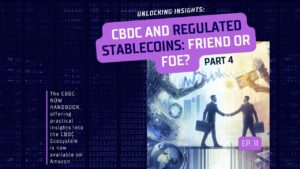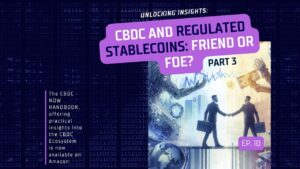This Week: Tokenization, Stablecoins, and AI in Central Banking

Project Promissa is a joint project between the Bank for International Settlements (BIS) Innovation Hub, the World Bank, and the Swiss National Bank. The project aims to enhance the funding processes of multilateral development banks (MDBs) by tokenizing promissory notes. Currently, MDBs fund their activities through member subscriptions and contributions, which are usually paid in cash or by paper-based promissory notes. However, the manual processes associated with the lifecycle events of paper-based promissory notes are time-consuming, cumbersome, and require constant reconciliation.
The project built a proof of concept (PoC) platform for tokenized promissory notes, exploring several key features, including a single source of truth, multiparty signatures, confidentiality, and sovereignty. The platform ensures real-time access to the true state of a promissory note, automates manual approval processes, and preserves each party’s ownership, control, and decision-making authority over their promissory notes.
The PoC was tested with several central banks, ministries of finance, and MDBs, and the results indicate that the platform effectively addresses key pain points and provides value to all parties involved. The project has made progress in researching the legal viability of tokenizing promissory notes, and the next steps include further work on functional and non-functional requirements, legal and compliance aspects, and governance and operating models.
Key Takeaways:
- Project Promissa explores the tokenization of promissory notes to enhance operational efficiency and reduce reconciliation efforts in MDBs.
- The PoC platform ensures real-time access to the true state of a promissory note, automates manual approval processes, and preserves each party’s ownership, control, and decision-making authority.
- The project has made progress in researching the legal viability of tokenizing promissory notes, and the next steps include further work on functional and non-functional requirements, legal and compliance aspects, and governance and operating models.
- The project has the potential to reduce the administrative burden and costs associated with promissory notes, and to increase the efficiency and transparency of MDBs’ funding processes.
Project Meridian FX is a joint project between the Bank for International Settlements (BIS) Innovation Hub and several central banks, aiming to explore the concept of synchronisation in foreign exchange (FX) transactions. The project builds on the foundational work of Project Meridian, which successfully synchronised a delivery-versus-payment (DvP) transaction for a hypothetical UK housing purchase. Project Meridian FX expands the scope of synchronisation from Real-Time Gross Settlement (RTGS) systems to include fast payment systems and distributed ledger technology (DLT) platforms.
The project demonstrates the technical feasibility of synchronised settlement in FX transactions, enabling atomic settlement of FX transactions across ledgers in different jurisdictions and technologies. The project’s synchronisation operator (SO) prototype is designed to orchestrate FX transactions, tracking the overall status of a chain of transactions and moving to the next life-cycle stage when all transactions are ready. The SO achieves atomic FX settlement by earmarking funds, initiating settlement, and updating transaction status to complete.
The project explores two liquidity savings approaches: gross settlement with queuing and gross settlement with offsetting. The former approach queues normal priority transactions and settles them in a batch, while the latter approach integrates liquidity saving with netted fund reservations for each bank and facilitates multilateral settlement executions. The project also examines the (PvP) + (PvP) use case, which extends the PvP principle to transactions involving three parties.
Key Takeaways:
- Project Meridian FX demonstrates the technical feasibility of synchronised settlement in FX transactions.
- The project’s SO prototype enables atomic settlement of FX transactions across ledgers in different jurisdictions and technologies.
- The project explores two liquidity savings approaches: gross settlement with queuing and gross settlement with offsetting.
- The project examines the (PvP) + (PvP) use case, which extends the PvP principle to transactions involving three parties.
- The project highlights the potential benefits of synchronisation, including improved liquidity efficiency and reduced settlement risk.
The World Federation of Exchanges (WFE) publishes a report on the value of Central Bank Digital Currencies (CBDCs) to public markets. The report finds that CBDCs are a crucial enabler of a tokenised financial ecosystem, but their adoption and success depend on coordinated industry efforts and a balanced evaluation of benefits versus costs. CBDCs could introduce a new form of central bank money, improve audit trails, and streamline cross-border payments by bypassing traditional banking networks. They could also offer efficiency gains in settlement, be useful as collateral, and provide a complementary or alternative payment rail that enhances resilience.
However, the report also identifies significant challenges and risks to CBDC implementation, including interoperability issues, integration costs with legacy systems, regulatory alignment needs, and potential for market disruptions. The report concludes that while CBDCs may drive adoption of distributed ledger technology and improve efficiency, their impact on public markets may be limited due to the substantial implementation challenges and costs involved.
Key Takeaways:
- CBDCs are a crucial enabler of a tokenized financial ecosystem, but their adoption and success depend on coordinated industry efforts and a balanced evaluation of benefits versus costs.
- CBDCs could introduce a new form of central bank money, improve audit trails, and streamline cross-border payments by bypassing traditional banking networks.
- CBDCs could offer efficiency gains in settlement, be useful as collateral, and provide a complementary or alternative payment rail that enhances resilience.
- Significant challenges and risks to CBDC implementation include interoperability issues, integration costs with legacy systems, regulatory alignment needs, and potential for market disruptions.
The Bank for International Settlements (BIS) publishes a report on the implications of artificial intelligence (AI) on human capital in central banks. The report highlights two potential scenarios for AI development: “AI copilots” that augment human skills and “AI agents” that automate specific tasks. Central banks are already integrating AI copilots into their daily operations, enhancing staff productivity without replacing human skills. However, AI agents could transform workflows in the next decade, potentially reducing the need for some human roles.
The report emphasizes the need for central banks to adapt their workforce and work profiles to harness the benefits of AI. New work profiles will be needed to build and maintain AI applications, and existing ones will require additional skills to leverage AI. Central banks face significant challenges in attracting and retaining talent, particularly in areas such as cybersecurity, IT, fintech, data science, and AI/ML. The high demand for these roles across the economy means that public institutions may struggle to match private sector salaries for top AI talent.
Key Takeaways:
- Artificial intelligence (AI) is changing how central banks use human capital, requiring a focus on retraining and upskilling existing staff, attracting new talent, and fostering a culture of innovation.
- Two scenarios, “AI copilots” and “AI agents”, illustrate the uncertainty around AI development, with copilots augmenting human skills and AI agents automating specific tasks.
- Central banks face significant challenges in attracting and retaining talent, particularly in areas such as cybersecurity, IT, fintech, data science, and AI/ML.
- The adoption of AI tools requires a clear governance framework, encompassing ethical guidelines, data privacy standards, accountability measures, and compliance protocols.
Progmat, Inc. and Datachain announce the launch of Phase 2 (operational verification) of their “Project Pax,” a project aimed at building a cross-border stablecoin (SC) payment platform. As part of this initiative, Shoko Chukin Bank, a prominent Japanese financial institution, has become the first bank to participate in the project, marking a significant milestone.
The Project Pax aims to address various challenges in cross-border payments, such as AML/CFT compliance, regulatory requirements, and the integration with existing operations, by leveraging the existing SWIFT infrastructure and collaborating with financial institutions globally. Progmat and Datachain have been leading the project, and Mitsubishi UFJ Trust Bank has been investigating the application of a trust-based SC scheme.
During Phase 1 (technical verification), the project participants developed a prototype and conducted technical verification between the SWIFT, Progmat, and Datachain systems, confirming the technical feasibility of SC transfers through SWIFT.
In Phase 2 (operational verification), the project will involve domestic and international banks as the sending and receiving banks, conducting more realistic cross-border payment verifications and identifying key issues to address for commercialization.
Shoko Chukin Bank, with its extensive customer base of small and medium-sized enterprises and a significant presence in trade-related payment services, has decided to participate in the project to address the pain points of cross-border payments and enhance its support for customers’ overseas expansion.
“Shoko Chukin Bank is one of the major financial institutions handling a wide range of payment services, including cross-border payments, for small and medium-sized enterprises across Japan,” said Tsunehiro Takahata, Managing Executive Officer and Head of the International Department at Shoko Chukin Bank. “By participating in this project, we aim to pursue services that can further support the overseas expansion and trade transactions of small and medium-sized enterprises.”
The project partners, Progmat and Datachain, will use the insights gained from Phase 2 to develop a commercial-grade system that addresses the implementation hurdles for financial institutions, enabling broader participation and advancing the capabilities of cross-border payments.
Key Takeaways:
- Progmat, Inc. and Datachain launch Phase 2 (operational verification) of their “Project Pax” to build a cross-border stablecoin (SC) payment platform.
- Shoko Chukin Bank, a major Japanese financial institution, has become the first bank to participate in the project, marking a significant milestone.
- The project aims to address various challenges in cross-border payments, such as AML/CFT compliance, regulatory requirements, and integration with existing operations, by leveraging the SWIFT infrastructure and collaborating with financial institutions globally.
- During Phase 1 (technical verification), the project participants confirmed the technical feasibility of SC transfers through SWIFT.
- In Phase 2 (operational verification), the project will involve domestic and international banks to conduct more realistic cross-border payment verifications and identify key issues for commercialization.
- Shoko Chukin Bank’s participation in the project is expected to contribute to enhancing its support for the overseas expansion and trade transactions of small and medium-sized enterprises in Japan.
- The project partners, Progmat and Datachain, will use the insights gained from Phase 2 to develop a commercial-grade system that addresses the implementation hurdles for financial institutions.
The Bank of Jamaica (BOJ) continued to fulfill its role of satisfying the public’s need for both physical currency and its Central Bank Digital Currency (CBDC), known as JAM-DEX, throughout 2024. The Bank of Jamaica (Amendment) Act, 2022, introduced provisions for JAM-DEX to be issued by the Bank as legal tender alongside notes and coins. Consequently, both the new polymer banknote series and JAM-DEX co-circulated during the year.
At the end of 2024, the total value of JAM-DEX in circulation amounted to J$258.5 million. This total circulation was distributed between the public, who held J$144.8 million (56.0 per cent), and Wallet Providers, who held the remaining J$113.7 million (44.0 per cent) in their digital vaults.
The number of registered JAM-DEX wallet users saw continued growth in 2024, totaling 282,274 by year-end. This figure represents a 7.0 per cent increase compared to the number of users registered at the end of 2023. Further resources and reports on Jamaica’s CBDC are available on the BOJ website.
Key Takeaways:
- JAM-DEX is Jamaica’s Central Bank Digital Currency (CBDC).
- It holds legal tender status in Jamaica, introduced by provisions in the Bank of Jamaica (Amendment) Act, 2022.
- Issuing JAM-DEX is a statutory obligation for the Bank of Jamaica.
- JAM-DEX co-circulated with physical banknotes and coins in 2024.
- The total value of JAM-DEX in circulation at end-2024 was J$258.5 million.
- The public held 56.0 per cent (J$144.8 million) of the total circulated JAM-DEX.
- Wallet Providers held the remaining 44.0 per cent (J$113.7 million).
- The number of registered JAM-DEX wallet users reached 282,274 by the end of 2024.
This represents a 7.0 per cent increase in registered users relative to end-2023.
In a move to further enhance its digital payments ecosystem, PayPal introduces a new rewards program for its stablecoin, PayPal USD (PYUSD). The program, dubbed “PayPal Unlocks Rewards for Holding PayPal USD,” will provide US users the ability to earn 3.7% annually in rewards on their PYUSD holdings within their PayPal or Venmo wallets.
The new loyalty offering, set to launch in Summer 2025, will allow PayPal and Venmo3 users to earn rewards on their PYUSD balances, which they can then use for a variety of purposes, including paying at millions of merchants, sending directly to other PayPal and Venmo users, funding remittances on Xoom without transaction fees, converting 1:1 to their fiat balance, converting to other cryptocurrencies, and sending on-chain to supported wallets on the Ethereum and Solana blockchains.
“At PayPal, we believe stablecoins have the power to reshape the future of commerce as the foundation for the next generation of payments. Combining this innovative technology with our expansive global network allows us to help all users thrive in the world economy,” said Alex Chriss, President and CEO of PayPal.
The rewards program offers users several key benefits:
- Commerce-Ready: All PYUSD, whether purchased or received, can be used seamlessly to fund payments within the PayPal and Venmo ecosystems, providing users with additional flexibility and choice in how they use the stablecoin.
- Accrue Rewards Daily, Receive Rewards Monthly: Users will earn a 3.7% annual rewards rate, which will be awarded in PYUSD the following month and added directly to their Cryptocurrencies Hub.
- Opt-In and Opt-Out: Users can choose to participate in the program or opt out at any time, and they can quickly and easily redeem their PYUSD holdings for USD in their PayPal or Venmo Cryptocurrencies Hub.
The introduction of the PYUSD rewards program underscores PayPal’s commitment to driving innovation in the digital payments space and empowering users to thrive in the evolving world economy.
Key Takeaways:
- PayPal introduces a new loyalty offering that allows US users to earn 3.7% annually in rewards on holdings of PayPal USD (PYUSD) in their PayPal or Venmo wallets.
- The PYUSD rewards program, available starting Summer 2025, enables users to earn and use PYUSD for a variety of transactions, including payments, peer-to-peer transfers, remittances, and cryptocurrency conversions.
- All PYUSD, whether purchased or received, can be used seamlessly within the PayPal and Venmo ecosystems, providing users with additional flexibility and choice.
- Users will earn the 3.7% annual rewards rate, which will be awarded in PYUSD the following month and added directly to their Cryptocurrencies Hub.
- Users can opt into or opt out of the program at any time and quickly redeem their PYUSD holdings for USD in their PayPal or Venmo Cryptocurrencies Hub.
- The PYUSD rewards program underscores PayPal’s commitment to driving innovation in the digital payments space and empowering users to thrive in the evolving world economy.
Mastercard launches new global capabilities to support stablecoin payments across its vast merchant network. The payments giant is working with a range of partners to unlock the benefits of blockchain and digital assets for mainstream use cases.
As part of this initiative, Mastercard is collaborating with crypto exchange OKX to roll out the “OKX Card,” aimed at linking crypto trading and Web3 activities with everyday spending on Mastercard’s merchant network. This partnership will provide users with the ability to seamlessly use their crypto holdings for everyday purchases.
Additionally, Mastercard is working with companies like Circle, Nuvei, and Paxos to enable direct merchant settlement in stablecoins such as Circle’s USDC. This functionality will allow merchants to receive stablecoin payments directly, streamlining the payment process and reducing friction.
“When it comes to blockchain and digital assets, the benefits for mainstream use cases are clear,” said Jorn Lambert, Chief Product Officer at Mastercard. “To realize its potential, we need to make it as easy for merchants to receive stablecoin payments and for consumers to use them. We believe in the potential of stablecoins to streamline payments and commerce across the value chain. Unlocking this is core to how we navigate the rapidly changing world, giving people and businesses the freedom they want by providing the choices they deserve.”
Mastercard’s initiative spans the full range of stablecoin use cases, from wallet enablement and card issuance to merchant settlement and on-chain remittances. The company has previously partnered with crypto exchanges like Kraken, Binance, and Crypto.com to allow users to pay with stablecoins via traditional cards.
The expansion of Mastercard’s stablecoin capabilities aligns with the broader trend of stablecoins moving beyond trading venues and into mainstream payments. By collaborating with industry leaders and leveraging its extensive merchant network, Mastercard aims to make stablecoin transactions as seamless as traditional payments, driving adoption and innovation in the digital asset economy.
Key Takeaways:
- Mastercard is expanding its support for stablecoin payments, working with partners like Circle, Nuvei, and Paxos to enable direct merchant settlement in stablecoins.
- The company is partnering with crypto exchange OKX to launch the “OKX Card,” linking crypto trading and Web3 spending to Mastercard’s merchant network.
- Mastercard’s stablecoin initiative covers the full range of use cases, from wallet enablement and card issuance to merchant settlement and on-chain remittances.
- The company believes in the potential of stablecoins to streamline payments and commerce, and is committed to making it easier for merchants to receive stablecoin payments and for consumers to use them.
- Mastercard’s move into the digital asset economy aligns with the broader trend of stablecoins moving beyond trading venues and into mainstream payments.
- By leveraging its extensive merchant network and collaborating with industry leaders, Mastercard aims to make stablecoin transactions as seamless as traditional payments, driving adoption and innovation in the digital asset space.
A trio of prominent Abu Dhabi institutions team up to launch a new dirham-pegged stablecoin, pending regulatory approval from the United Arab Emirates (UAE) authorities.
The partnership includes ADQ, the Emirate’s sovereign wealth fund, First Abu Dhabi Bank (FAB), the largest bank in the UAE, and the massive conglomerate International Holding Company (IHC). The three companies have joined forces to develop the new stablecoin, which will be regulated by the UAE’s central bank and backed by the country’s currency, the dirham.
The goal of this initiative is to place the UAE at the “forefront of global blockchain innovation” and strengthen the country’s digital infrastructure, according to ADQ. If the stablecoin receives the necessary regulatory approvals, it will operate on the ADI blockchain, created by the ADI Foundation, a nonprofit organization dedicated to advancing the adoption of blockchain technology in established financial systems and governments.
“The launch of this new stablecoin is a significant step forward in the UAE’s quest to become a global hub for blockchain innovation,” said Khalifa Al Suwaidi, Chief Investment Officer at ADQ. “By leveraging the expertise and resources of our partners, we are confident that this initiative will drive the widespread adoption of blockchain technology and cement the UAE’s position as a leader in this space.”
Established in 2018, ADQ is a sovereign wealth fund focused on critical infrastructure and global supply chains. IHC, on the other hand, is one of the UAE’s largest investment firms and conglomerates, with a market value of over $243 billion and ties to the ruling family of Abu Dhabi, the country’s capital.
FAB, the largest bank in the UAE, was formed in 2017 through a merger between First Gulf Bank and National Bank of Abu Dhabi. The bank’s participation in this stablecoin project underscores the growing importance of digital assets and blockchain technology in the financial sector.
The launch of the dirham-pegged stablecoin is expected to support a variety of use cases, including machine-to-machine and artificial intelligence applications, further solidifying the UAE’s position as a hub for technological innovation and financial development.
Key Takeaways:
- Three major Abu Dhabi institutions – ADQ, First Abu Dhabi Bank (FAB), and International Holding Company (IHC) – partner to launch a new dirham-pegged stablecoin.
- The stablecoin will be regulated by the UAE’s central bank and backed by the country’s currency, the dirham.
- If approved by regulators, the stablecoin will operate on the ADI blockchain, created by the ADI Foundation.
- The goal of this initiative is to place the UAE at the forefront of global blockchain innovation and strengthen the country’s digital infrastructure.
- ADQ is a sovereign wealth fund focused on critical infrastructure and global supply chains, while IHC is one of the UAE’s largest investment firms and conglomerates.
- FAB, the largest bank in the UAE, is participating in the project, highlighting the growing importance of digital assets and blockchain technology in the financial sector.
- The new stablecoin is expected to support a variety of use cases, including machine-to-machine and artificial intelligence applications.





